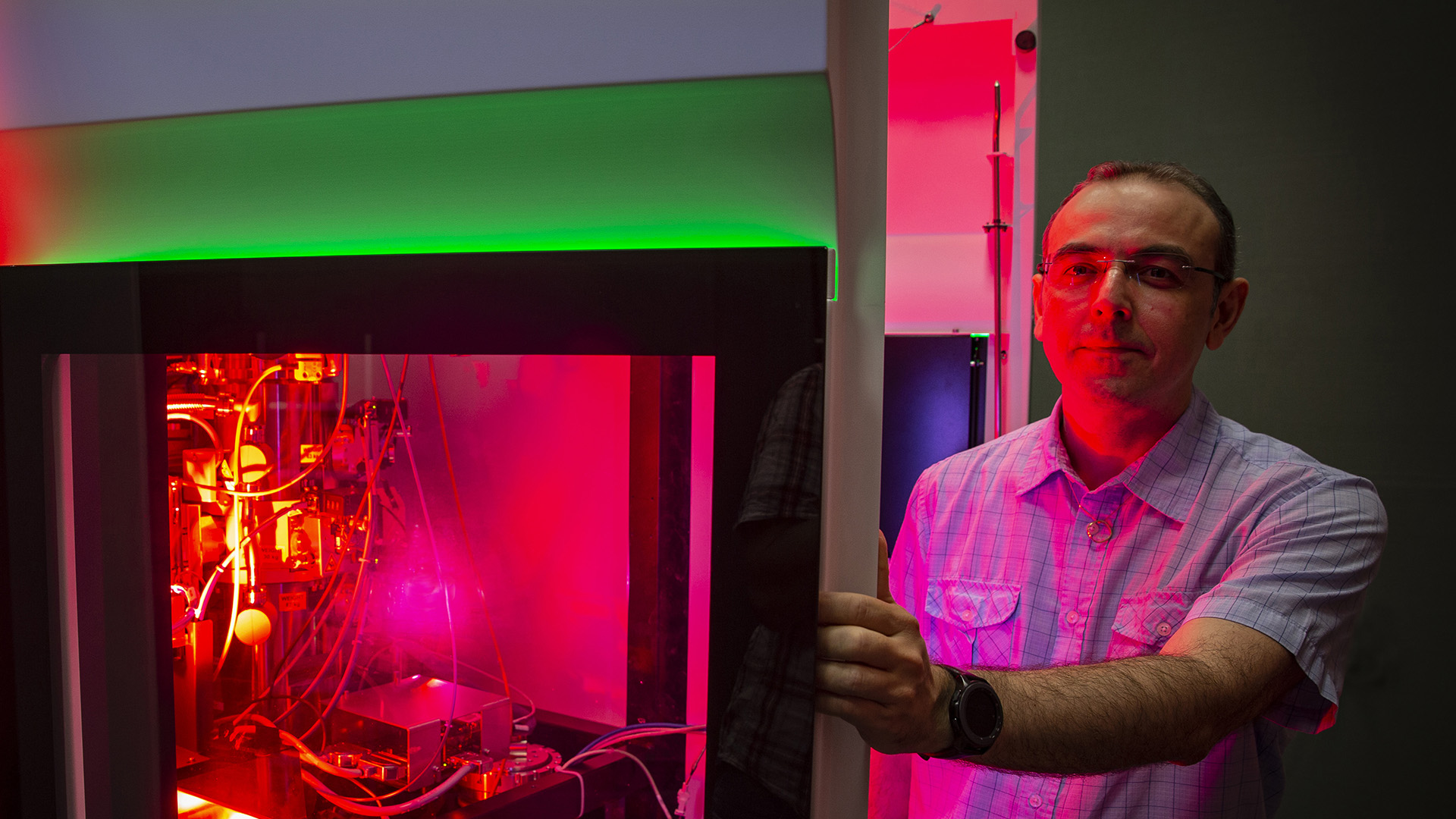Breakthrough will aid the fight against deadly bacteria and help to develop new cures

Using some of the world's most powerful microscopes, three international research teams - from Australia, the Czech Republic and a German/US/Finnish consortium - have discovered a unique molecular mechanism that allows pathogenic bacteria to maintain efficient gene expression.
The new insights are published in back-to-back articles in Nature Communications, a leading scientific journal.
One of the tiny machines that operates inside our cells, keeping all living things alive, is called RNA polymerase (RNAP). RNAP reads the genetic code in our DNA and transcribes it into another molecule called RNA that carries out other vital functions, such as producing the proteins that keep us alive.
Every so often, RNAP gets "stuck" on DNA while it is transcribing it into RNA. This creates two problems: First, that particular RNAP goes out of commission, but more importantly, if DNA replication takes place and the DNA replication machinery hits such a stuck RNAP, it may result in all sorts of problems and may ultimately lead to cell death.
Using cryogenic electron microscopy (Cryo-EM), a powerful approach that can resolve the 3D structures of macromolecular complexes to high resolution, the researchers were able to see how some bacteria solve this fundamental problem.
The Australian team, headed by Dr Gökhan Tolun from the University of Wollongong (UOW) and Professor Peter Lewis from the University of Newcastle, studied the HelD complex of RNAP from an important model bacterium, Bacillus subtilis, closely related to dangerous human pathogens such as Bacillus anthracis (anthrax) and Clostridium difficile (lethal pseudomembranous colitis and diarrhea).
"In our fight against such deadly bacteria, structural biology is one of the most powerful weapons we have," Dr Tolun said.
"Once we see the structures of these bio-nano-machines, we can better understand how they work - structure dictates function! Understanding how such vital biological processes work then leads to designing means of interfering with them.
"That means we can use the molecular structures we determine to develop drugs that bind to these essential molecular machines and inhibit their functions, resulting in the death of that bacterial cell. Ultimately, it allows us to develop novel cures that currently do not exist!
"We employed a structural biology approach to answer the question: 'How does HelD work?' We found that the protein molecule HelD removes stuck RNAP from the DNA. This both rescues and recycles the RNAP to let it continue to do its job, but also removes what would otherwise be a roadblock for the DNA replication machinery."
Professor Lewis described the process by which HeID removed the stuck RNAP as a "dramatic brute force approach".
"The bacteria enlist a molecule called HelD that has powerful 'arms' to reach deep into RNA polymerase. HelD uses these arms to pry the enzyme wide open and to swipe away all bound nucleic acids, reminiscent of a well-muscled comic-book hero," Professor Lewis said.
The Australian team's paper is the first high-impact paper with a significant contribution from UOW researchers to come out of UOW's new $80-million Molecular Horizons Cryo-EM facility. Both of the high-resolution cryo-EM structures of the RNAP macromolecular complexes reported in this paper have been determined at UOW.
"We have a world-class Cryo-EM facility here at UOW that allows us to take very high-resolution pictures of individual molecular machines," Dr Tolun said.
"These images are much like when you get an X-ray, but of the tiny biological machines instead of your body. Then, we use supercomputers to process these images to reconstruct the three dimensional atomic structure of these assemblies."
In the other papers published in Nature Communications, the Czech consortium, led by Libor Krásný and Jan Dohnálek (Czech Academy of Sciences), discovered a variant of the same mechanism in Mycobacteria, the causative agents of tuberculosis and other devastating diseases.
The consortium of researchers from Germany, the USA and Finland, led by Markus Wahl (Freie Universität Berlin), elucidated how a particular auxiliary component of RNAP helps HelD in its action in some bacteria.
These researchers also provided evidence that under conditions of low energy supply, HelD may alternatively help package RNA polymerase in an inactive form.
The findings uncover molecular mechanisms important for the efficient growth of pathogenic bacteria, and for their ability to escape the immune system by entering dormant states. Thus, they point to potential new avenues that could help combat such pathogens by interfering with HelD-mediated RNAP recycling or hibernation.
These three publications put together reveal a previously unknown mechanism for RNAP rescue and recycling in these bacteria, leading the way to developing novel therapeutics against them.
About the research
'Molecular basis for RNA polymerase-dependent transcription complex recycling by the helicase-like motor protein HelD' by Timothy P. Newing, Aaron J. Oakley, Michael Miller, Catherine J. Dawson, Simon H.J. Brown, James C. Bouwer, Gökhan Tolun, Peter J. Lewis is published in Nature Communications. DOI: 10.1038/s41467-020-20157-5
This research was supported by grants from the Priority Research Centre for Drug Discovery, University of Newcastle, NUW Alliance and NHMRC.






